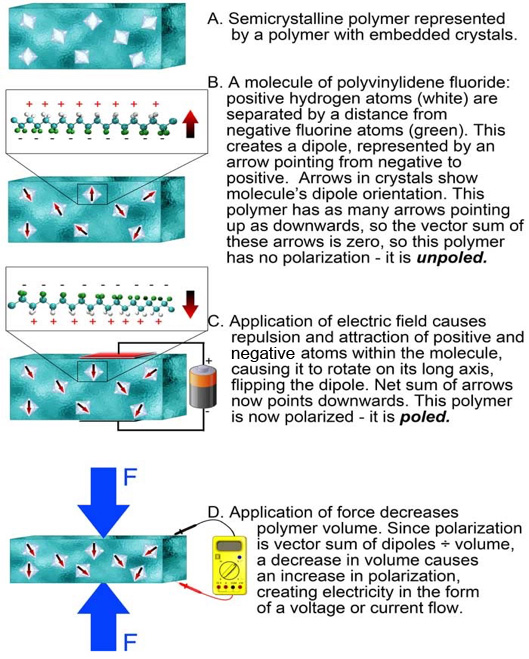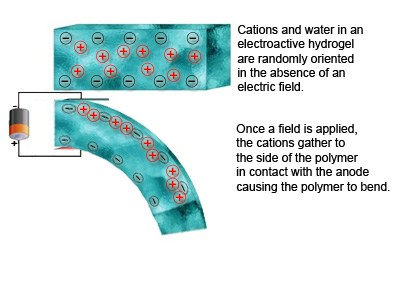Electroactive polymers respond to electrical stimulation by deformation, and for piezoelectric polymers, an applied strain will induce an electrical current in the polymer. Usually, this deformation happens through a change in size or shape. The deformation of piezoelectric scaffolds (left) is smaller than that of ionic electroactive hydrogels (right). Piezoelectric polymers can maintain a permanent electric polarization that can reverse its polarity in an external electric field. Ionic electroactive hydrogels possess fixed negative charges within the polymer. When in the presence of a voltage differential, free flowing water and cations are attracted to the negative anode, which induces unilateral swelling in the presence of a current, causing the material to deform in one direction.
Ionic Electroactive Scaffolds for Cell Differentiation Mesenchymal (or adult) stem cells are widely used for tissue engineering purposes because they proliferate rapidly and can become a variety of cell types. Differentiated cells do not multiply as quickly, therefore it is preferable to start with mesenchymal stem cells and differentiate them within a cell scaffold. Since a variety of tissues, such as neural, bone, and muscle, are electroactive, electroactive polymers are being investigated as scaffolds for these tissues. With our collaborators, we developed a PEG-based electroactive polymer and are currently investigating its effects on mesenchymal stem cells.
Piezoelectric Scaffolds for Tissue Regeneration Applying a current to neurons has been shown to affect neurite growth. Piezoelectric scaffolds have shown promise as nerve guides to regenerate damaged nerves. The benefit of using piezoelectric scaffolds rather than electrodes is that no percutaneous leads are required to deliver an electrical stimuli, simply applying vibration over the skin induces an electrical current within the scaffold. We are investigating the effect of piezoelectric scaffolds on multiple cell types.
|









